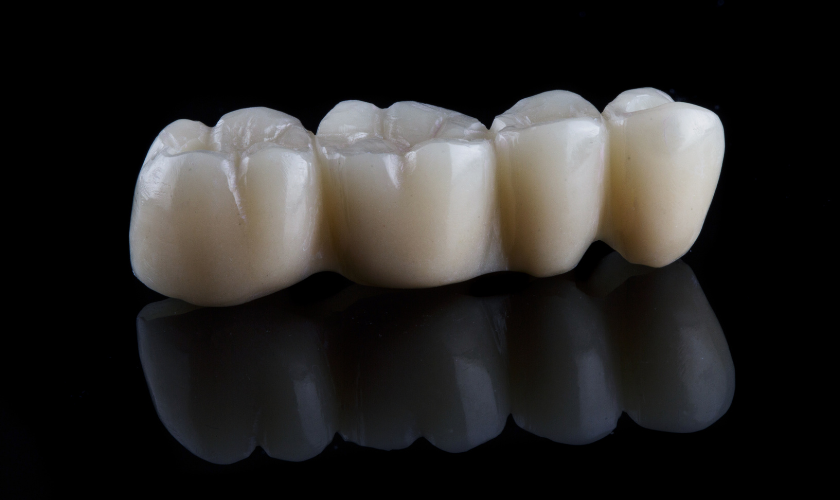
When faced with the need for a dental bridge, patients often wonder about the time it takes to complete the procedure. One common question that arises is whether a dental bridge can be done in just one day. To understand this, it’s essential to delve into the traditional and same-day approaches to dental bridge placement.
Traditionally, getting a dental bridge involved a multi-step process spanning several visits to the dentist. However, advancements in dental technology have led to the development of same-day dental bridges, promising a quicker solution to tooth restoration. In this blog, we’ll explore the intricacies of both traditional and same-day dental bridge procedures, the factors influencing their feasibility, and the benefits and limitations associated with each approach.
By the end, you’ll have a clear understanding of whether a dental bridge can indeed be done in one day and the considerations involved in making that decision.
Traditional Dental Bridge Procedure
A traditional dental bridge procedure typically involves several steps, beginning with an initial consultation with your dentist to assess your dental health and suitability for the procedure. Here’s an overview of the process:
- Initial Consultation: During your first visit, your dentist will examine your teeth and gums, take X-rays, and discuss your treatment options. This consultation helps determine whether a dental bridge is the most suitable solution for your dental needs.
- Tooth Preparation: If a dental bridge is deemed appropriate, the next step involves preparing the abutment teeth, which serve as anchors for the bridge. This process may involve reshaping the abutment teeth to ensure a proper fit for the bridge.
- Impression Taking: Once the abutment teeth are prepared, impressions of your teeth are taken. These impressions are used to create a custom-made dental bridge that matches the color, size, and shape of your natural teeth.
- Temporary Bridge Placement: While your permanent bridge is being fabricated in a dental laboratory, your dentist may place a temporary bridge to protect the prepared teeth and maintain aesthetics and function.
- Final Bridge Placement: Once the permanent bridge is ready, typically within a few weeks, you return to the dentist for the final bridge placement. Your dentist will ensure that the bridge fits properly and make any necessary adjustments for comfort and function. Once satisfied, the bridge is permanently cemented in place, restoring your smile and dental function.
Same-Day Dental Bridge Procedure
Same-day dental bridge procedures offer an alternative to traditional methods, providing convenience and efficiency. Here’s a closer look at same-day dental bridge techniques and their pros and cons:
About Same-Day Bridges
Same-day dental bridges, also known as chairside or same-visit bridges, utilize advanced technology such as computer-aided design and manufacturing (CAD/CAM) to fabricate the bridge on-site in a single dental visit. With this technique, digital impressions of the teeth are taken, and the bridge is milled from a block of dental material, such as ceramic, right in the dental office.
Benefits of Same-Day Dental Bridges
Same-day dental bridges present several benefits for patients seeking efficient and effective dental solutions:
Convenience and Time-Saving Aspects
One of the primary advantages of same-day dental bridges is the convenience they offer. With traditional bridge procedures, patients may need multiple appointments spanning several weeks to complete the treatment process. In contrast, same-day bridges can be fabricated and placed in a single dental visit, saving patients time and reducing the overall treatment duration. This is particularly beneficial for individuals with busy schedules or those who prefer to minimize their time spent at the dental office.
Immediate Restoration of Dental Function and Aesthetics
Same-day dental bridges provide immediate restoration of both dental function and aesthetics. Patients can leave the dental office with a fully functional and aesthetically pleasing dental restoration, allowing them to resume normal activities without delay. This aspect of same-day bridges is especially advantageous for individuals who require prompt treatment for damaged or missing teeth to restore their ability to eat, speak, and smile confidently.
Factors Affecting Same-Day Dental Bridges
Factors influencing the suitability and success of same-day dental bridges include:
Patient Eligibility and Dental Health Requirements
Before undergoing a same-day dental bridge procedure, patients must meet certain eligibility criteria, such as having sufficient dental health to support the bridge and the absence of underlying oral health issues that may affect the treatment outcome. Dentists assess factors like gum health, tooth structure, and overall oral hygiene to determine if a patient is a suitable candidate for same-day bridges.
Technology and Equipment Used in Same-Day Procedures
The success of same-day dental bridges relies heavily on the technology and equipment utilized during the procedure. Advanced CAD/CAM technology enables dentists to design, fabricate, and place dental restorations accurately and efficiently in a single appointment. High-quality materials and precise milling equipment ensure durable and well-fitting bridges that meet patients’ functional and aesthetic needs.
While traditional dental bridge procedures remain a reliable option for tooth replacement, advancements in dental technology have introduced same-day dental bridges as a convenient alternative. Understanding the differences, benefits, and considerations associated with both options is crucial for making informed decisions about dental treatment. Whether opting for a traditional or same-day bridge, consulting with a qualified dentist is essential to determine the most suitable approach for individual dental needs.
